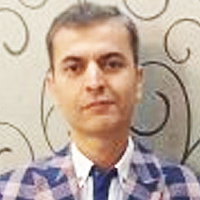Large Cystic Dilatation of the Common Bile Duct
Published on: 19th March, 2024
Li B, Chen BW, Xia LS. The Initial Experience of Laparoscopic Management for Type VI Choledochal Cyst in Children. J Laparoendosc Adv Surg Tech A. 2024 Mar;34(3):280-283. doi: 10.1089/lap.2023.0229. Epub 2023 Oct 16. PMID: 37844069.
Dumitrascu T, Lupescu I, Ionescu M. The Todani classification for bile duct cysts: an overview. Acta Chir Belg. 2012 Sep-Oct;112(5):340-5. doi: 10.1080/00015458.2012.11680849. PMID: 23175921.
Dutta S, Jain A, Reddy A, Nelamangala Ramakrishnaiah VP. Anomalous Pancreaticobiliary Duct Junction in an Unusual Case of Synchronous Gallbladder and Bile Duct Malignancy. Cureus. 2021 Feb 13;13(2):e13331. doi: 10.7759/cureus.13331. PMID: 33738174; PMCID: PMC7959653.
Xia HT. Standardized Surgical Management for Cystic Dilation of the Bile Ducts Based on Clinical and Pathological Studies: A Narrative Review. Gastroenterol Res Pract. 2020 Sep 15;2020:3432786. doi: 10.1155/2020/3432786. PMID: 33014038; PMCID: PMC7512076.
Evaluation of the Anti-inflammatory Activity of Equisetum arvense and Baccharis trimera Fractions
Published on: 19th March, 2024
Inflammation is a natural response of the body to defend itself against potential threats and can be reduced through physical activity, proper nutrition, and the use of herbal medicines, which are medicinal plants. In the study, we aim to examine the anti-inflammatory effects of the volatile and ethanolic fractions of two commonly used medicinal plants, Equisetum arvense, and Baccharis trimera. The essential oils were obtained by hydrodistillation of the fresh leaves of the plants, while the ethanolic extracts were obtained using classical methodologies. All fractions were tested for anti-inflammatory activity, evaluating their ability to stabilize the red blood cell membrane and inhibit the spreading, and phagocytosis by macrophages, at concentrations varying from 200 to 600 µg mL-1. The results of the experiments suggest that the ethanolic fraction of B. trimera shows promising results compared to the positive controls. Our investigations thus contribute to the specialized literature on the use of herbal medicines around nutrition, providing guidance for future studies on these fractions.
Why Down-managing Backlog Forensic DNA Case Entries Matters
Published on: 22nd March, 2024
Forensic laboratories face a backlog of case files, affecting service delivery, causing delays. The backlog points to underfunding, poor planning, and inadequate support, hindering deoxyribonucleic acid (DNA) analysis. Resolving casework backlogs may initially seem like a straightforward and attainable measure to improve the arrest of offenders and promote justice. Longer turnaround times impede investigative leads, emphasising the need for efficient strategies and a comprehensive approach to address and prevent backlogs in forensic laboratories. No study has been published on the forensic DNA backlogs in South Africa. The article explicitly addresses one aspect of a Doctor of Philosophy study and aims to ascertain the impact of backlogs in forensic DNA case entries. The study article’s research questions included the following: “What cases are considered as backlog?”; “What is the current backlog in forensic DNA case entries in South Africa?” and “What are the main reasons for the backlog of cases involving forensic DNA?” The prompt processing of DNA evidence is vital not only for safeguarding individuals falsely accused of crimes based on circumstantial evidence but also for aiding prosecutors and providing justice for crime victims.
Approximation of Kantorovich-type Generalization of (p,q) - Bernstein type Rational Functions Via Statistical Convergence
Published on: 19th March, 2024
In this paper, we use the modulus of continuity to study the rate of A-statistical convergence of the Kantorovich-type (p,q) - analogue of the Balázs–Szabados operators by using the statistical notion of convergence.Mathematics subject classification: Primary 4H6D1; Secondary 4H6R1; 4H6R5.
Smart Cities and Aging Well: Exploring the Links between Technological Models and Social Models for Promoting Daily Social Interaction for Geriatric Care
Published on: 19th March, 2024
The aging global population requires a new social model to meet the growing social, economic, and physical needs of seniors. Western social models need to be reconsidered in light of examples that support communal ways of living, which are sustainable through smart city design for more supportive geriatric care systems. To address the complex problems of geriatric care in this growing aging population with specific needs related to increased lifespan and limited financial resources, the use of emerging technologies, such as artificial intelligence (AI) and the Internet of Things (IoT), should be considered. As retirement ages rise and funds for retirement continue to decrease automated and sustainable solutions need to be sought. The ethical need to consider citizens not as customers but as decision-makers and to validate the ethical nature of medical decisions made for and by individuals should also be prioritized. This study provides recommendations for a smart city design and highlights the need for reflection on the ethics, modernization, and management of geriatric care. It suggests that technological devices can benefit health system reform by facilitating problem-solving. Overall, this new model integrates communal living and non-Western values with emerging technologies to address the growing need for geriatric care and the well-being of seniors.
Laws of Pathophysiology of Migraine in the Third Millennium
Published on: 20th March, 2024
Science is the art of systematic and reproducible measurements, ultimately leading to knowledge supported by a holistic logic. Besides serendipity, there are 6 ways in general to obtain knowledge: authoritarianism; mysticism; rationalism, empiricism; pragmatism; and scepticism. Over the last 100 years, a canonical mythology – cortical spreading depression (CSD) – has prevailed in migraine pathophysiology. Conversely, a well-defined adaptive/protective role has evolved for CSD in locusts, Drosophila, and mammals. Additionally, an elaborate but entirely symptomatic nosologic system has arbitrarily evolved in migraine / primary headache. While the so-called systematic but symptomatic classification system of migraine / primary headache keeps on advancing the data-bank exponentially, the cause-effect nexus continues to obscure the most important systematic and insightful components of the knowledge of primary headache. The first step in advancing the cause-effect mystery of migraine / primary headache is to create a conceptual, consistent, and important adaptive-pathogenetic divide in the massive and disparate data-linked pathophysiology of the disorder. Once certain definitive principles (not laboratory/neuroimaging / genetic/epidemiologic data) emerge in the science of migraine / primary headache, we become empowered to understand the complex but key phenotypic blueprint as well as the neuro-pathophysiology / neuropsychiatry of the entity, including the visual (nasal visual-field sparing digitally-displaceable and eyeball-movement-synchronous scintillating scotomata), the lateralizing fronto-temporal-nuchal headache exclusively involving the ophthalmic division of the trigeminal nerve, and the associated features such as ‘stress’, ‘post-stress’, ‘autonomic storm’, ‘protean’ and ‘spontaneous’ onset and offset, and headache-aborting nausea-vomiting. In this manner, we have also evolved principles to begin to understand the most complex female predominance of migraine patients in adults [F:M=3:1] as well as the decline of prevalence in migraine attacks following menopause and advancing age. The Laws of the Pathophysiology of Migraine encompass the invaluable neurological / neuro-ophthalmological shift in pathophysiology from the brain to the eye.
A General Evaluation of the Cellular Role in Drug Release: A Clinical Review Study
Published on: 26th March, 2024
Cells have emerged as highly promising vehicles for delivering drugs due to their unique advantages. They have the ability to bypass immune recognition, navigate biological barriers, and reach difficult-to-access tissues through sensing and active movement. Over the past couple of decades, extensive research has been conducted to understand how cell carriers can overcome biological barriers and influence drug effectiveness. This has resulted in the development of engineered cells for targeted drug delivery to specific tissues. Despite the presence of exciting developments, a comprehensive understanding of the challenges and potential strategies is necessary for the effective clinical application of cell-based drug carriers. This review provides an overview of recent progress and novel concepts in cell-based drug carriers, as well as their potential for translation into clinical practice. Additionally, we delve into important factors and emerging strategies for designing the next generation of cell-based delivery technologies, with a particular emphasis on achieving greater accuracy and targeted drug administration.
The Accuracy of pHH3 in Meningioma Grading: A Single Institution Study
Published on: 26th March, 2024
Introduction: In the latest WHO classification of central nervous system tumors, Mitotic Index (MI) counted on Phosphohistone-H3 stained slides (pHH3-MI) has been suggested as a valid proliferative marker in various tumors including in the evaluation of meningioma grading.We aim to report our own experience in assessing the efficiency of the anti-pHH3 antibody as a grading tool for meningiomas.Methods: A retrospective study was conducted on a series of 40 meningiomas diagnosed from March 2020 to April 2021 at the Pathology Department of the Military Hospital of Tunis. We attempted immunohistochemistry and compared MI assessed on both pHH3 and HE-stained slides.Results: According to the HE-MI and pHH3-MI, the 40 cases of meningiomas were respectively divided into 35 versus 29 grade 1 cases, four versus eight grade 2 cases, and one versus three grade 3 cases. A highly significant correlation was found between pHH3-MI and HE-MI (p < 0.001). A significantly higher sensitivity in the pHH3 counting method was reported in our study. Discussion: we found, in accordance with the literature, that pHH3-MI is more reliable and accurate in mitotic counting, therefore exhibiting a high sensitivity in tumor grading, reported by an upgrade within 22,5% of the cases.Conclusion: PHH3-MI count facilitated a rapid reliable grading of meningiomas. However, molecular characteristics that could have a potentially significant impact on tumor progression should be the subject of further research.
Social Implementation and Measurement Accuracy Verification of Non-contact Biological Monitors
Published on: 25th March, 2024
In this research, for the purpose of social implementation, we conducted a near-miss demonstration experiment using a car driving in the city and a drive-simulator. Next, we conducted a demonstration experiment to evaluate the reliability of biometric information measured on patients in a medical facility's recuperation ward and residents of a special nursing home. NBC-1100 emits radar waves from a distance of up to 3 meters from an object and uses the reflected waves to measure biological information such as pulse waves and breathing waves. The multi-element pyroelectric effect was used to measure body temperature by detecting infrared radiation emitted from distant objects. This device is unique in that it can measure biological information without being restrained while wearing clothes. In the demonstration test, simultaneous measurements were conducted on nine healthy men aged 45 to 65 using a pharmaceutically approved product (μBP-mp) and a prototype non-contact biological monitor (NBC-1100 manufactured by K&S Co., Ltd.). The demonstration experiments at medical institutions and nursing care facilities were conducted with the consent of residents and their families and were conducted on 30 men and women between the ages of 70 and 94 who were undergoing treatment or in need of care. The tests were conducted on residents with chronic diseases such as dilated gastrostomies, symptomatic epilepsy, hypertension, Alzheimer's disease, and progressive supranuclear palsy. The evaluation method was simultaneous measurement using a master meter (μBP-mp) and a test meter (NBC-1100).
Factors Influencing Knowledge on the Completion of Treatment among Tuberculosis Patients under Directly Observed Treatment Strategy (DOTS) in a Selected Health Facility, the Bahamas
Published on: 25th March, 2024
Objective: To determine the factors influencing completion of DOTS in Tuberculosis treatment in the Bahamas.Methods: A quantitative, descriptive cross-sectional survey. Tuberculosis patients aged 18 years and above were considered regardless of the site or the smear status of their TB. The sample size was 40. Data analysis and interpretation were done using the statistical package for the social sciences software (SPSS version 24), through the exploration and calculation of descriptive (frequencies, percentages, means, standard deviations, and inferential (Anova) statistical methods. Statistical significance was determined to be a p < 0.05. Results: The mean age of the respondents, was 39.9 years, SD 11.65, and 73% of them were men. 63% of participants, 78% of whom were citizens of the Bahamas, reported having no annual income. Seventy-eight percent (31) of the participants said they had insufficient food and drink while they were unwell. More than half of the participants in the survey reported being on at least one pharmaceutical regimen, although 36% said they were not actively taking any of the prescription medications.Conclusion: Less than a third were noncompliant with DOTS, this was influenced by factors such as annual income, no family support, marital status, employment status, and educational level.
Navigating Diagnostic Dilemmas in Subacute Subdural Hemorrhage: A Case Report
Published on: 26th March, 2024
In this case report a 64-year-old male patient with recent past medical history of head injury complicated by zygomatic arc fracture and mild subarachnoid hemorrhage is studied. He had been presented to the Emergency Department because of progressive neurological symptoms and neurological deficits in the physical examination that could have been indicating subcacute subdural hemorrhage. However, the patient was reluctant to undergo diagnostic imaging due to concerns about radiation exposure. After several explanations, a CT scan was done, which revealed a bilateral subacute subdural hematoma. Neurosurgical management was initiated and intravenous corticosteroid therapy was administered to reduce local edema. The challenge of this case is based on the subtlety of symptoms that might cause patients to delay seeking medical attention. Additionally, patient reluctance to undergo diagnostic tests can complicate management, emphasizing the importance of patient education and therapeutic alliance. Multidisciplinary management involving Neurology and Neurosurgery is crucial for optimal patient care in such cases. This report underscores the significance of effective communication and collaborative decision-making between healthcare providers and patients to ensure timely and appropriate management of complex medical conditions.
The Cortisol Connection: Weight Gain and Stress Hormones
Published on: 28th March, 2024
Weight gain can be good or bad for health. Benefits include increased health for overweight people, disease or surgical recovery, and more. Health concerns, joint and musculoskeletal disorders, respiratory issues, metabolic abnormalities, cardiovascular health, psychological impact, reduced mobility, digestive troubles, hormonal changes, and cancer risk are negative impacts. Weight gain outcomes depend on heredity, weight distribution, and health. Maintaining a healthy weight needs a balanced diet, regular exercise, and stress management. A doctor or nutritionist can offer personalized weight management advice. Stress chemicals like cortisol trigger weight gain. ACTH stimulates adrenal glands to release cortisol, which increases hunger, fat storage, insulin resistance, and muscle loss. Understanding how stress hormones like cortisol affect weight gain is vital to reducing chronic stress’s health risks. Stress reduction, a balanced diet, regular exercise, proper sleep, social support, and professional treatment can mitigate these outcomes. Ultimately, stress hormones like cortisol can cause weight gain, but a holistic strategy tackling physical and psychological stress can help people maintain a healthy weight.
Correlation of Inappropriate use of Ceftriaxone and Bacterial Resistance in the Hospital Environment: Integrative Review
Published on: 29th March, 2024
Introduction: Bacterial resistance is a threat to public health, as it is estimated that 37,000 people die due to hospital infections, most of them due to multidrug-resistant bacteria. In part, this resistance is due to the inappropriate use of antibiotics, with ceftriaxone being one of the most used. Therefore, this article aims to analyze the consequences of using ceftriaxone in the hospital environment. Methodology: This is an integrative qualitative review, following the PICO strategy, using the Embase, BVS, and Pubmed databases, with the guiding question being: “In patients admitted to a hospital environment (P), is ceftriaxone used appropriately (I) for the treatment of infections (CO)?” and the time frame from 2013 to 2023. Results: 272 articles were found in total, 46 obtained from the VHL, 62 from PubMed, and 164 from Embase. Of these, 66 were duplicates, leaving 206 works for title and summary reading. After reading, 79 were selected for full reading, with 7 articles ultimately being selected for the study. An average of 62.3% of inappropriate use was found, with the minimum value found being 19% and the maximum being 87.9%. The main reasons for this use were: indication, dose, frequency, and duration. Conclusion: From reading the articles, it is concluded that the inappropriate use of ceftriaxone is mainly due to: indication, dose, frequency, and duration of treatment. These elements must be monitored, as their inappropriate use increases the length of hospital stay and may be associated with the emergence of bacterial resistance.
Persistent Lumbar Pain and Fever: Osteomyelitis as Diagnosis Challenge
Published on: 28th March, 2024
Objective: This study aimed to evaluate the clinical characteristics and diagnostic challenges associated with osteomyelitis in patients presenting with persistent lumbar pain and fever.Methods: We conducted a descriptive observational study, reviewing four cases of osteomyelitis diagnosed at our hospital’s Emergency Department in 2022. Data on patient demographics, medical history, clinical presentation, diagnostic methods, and treatment outcomes were analyzed.Findings: The cases included middle-aged to elderly men, with predisposing factors such as urological interventions and immunodeficiency. Imaging studies, particularly CT-scan and MRI, were instrumental in diagnosing lumbar spondylodiscitis. Biopsies revealed lymphoplasmacytic infiltrates and treatment responses were positive in all cases after eight months of follow-up. The study highlights the importance of considering osteomyelitis in the differential diagnosis of lumbar pain and fever, necessitating multidisciplinary collaboration for timely management.
Management and Therapeutic Strategies for Spinal Muscular Atrophy
Published on: 29th March, 2024
Spinal muscular atrophy is an autosomal recessive neuromuscular disorder characterized by progressive muscle weakness and atrophy. It is one of the most common single-gene disorders with an incidence rate of approximately 1 in 10,000 live births. The clinical manifestations are progressive hypotonia and muscle weakness due to the degeneration of alpha neurons in the anterior horn cells of the spinal cord and motor nuclei in the lower brain stem. Depending on the severity of the symptoms, SMA has five subtypes. Supportive measures can be offered for respiratory, gastrointestinal, and musculoskeletal complications. Carrier testing for all couples is recommended and this can be done by Multiplex Ligation-dependent Probe Amplification (MLPA). Prenatal diagnosis can be offered to carrier couples. Therapies must be given within the newborn period for maximum benefit and before the loss of motor neurons. It is achieved by identifying the SMA babies through Newborn screening. Several new FDA-approved drugs can reduce the progression of symptoms in SMA. However, they cannot offer a definite cure. Clinical follow-up and Neurological assessment demonstrate that SMA children can attain developmental milestones after receiving treatment, which is never normally attained in untreated cases. In utero SMA treatment with Zolgensma would enhance the survival rate and favorable neurological outcomes in the future. Base editing and Gene editing with CRISPR-Cas technologies to target the mutations and restore functional and stable SMN protein levels are the future hopes for a permanent cure of SMA.
The Ketogenic Diet: The Ke(y) - to Success? A Review of Weight Loss, Lipids, and Cardiovascular Risk
Published on: 6th March, 2024
Background: Obesity remains a global epidemic with over 2.8 million people dying due to complications of being overweight or obese every year. The low-carbohydrate and high-fat ketogenic diet has a rising popularity for its rapid weight loss potential. However, most studies have a maximal 2-year follow-up, and therefore long-term adverse events remain unclear including the risk of Atherosclerotic Cardiovascular Disease (ASCVD).Results: Based on current evidence on PubMed and Google Scholar, there is no strong indication ketogenic diet is advantageous for weight loss, lipid profile, and mortality. When comparing a hypocaloric ketogenic diet with a low-fat diet, there may be faster weight loss until 6 months, however, this then appears equivalent. Ketogenic diets have shown inconsistent Low-Density Lipoprotein (LDL) changes; perhaps from different saturated fat intake, dietary adherence, and genetics. Case reports have shown a 2-4-fold elevation in LDL in Familial hypercholesterolaemic patients which has mostly reversed upon dietary discontinuation. There is also concern about possible increased ASCVD and mortality: low (< 40%) carbohydrate intake has been associated with increased mortality, high LDL from saturated fats, high animal product consumption can increase trimethylamine N-oxide, and cardioprotective foods are likely minimally ingested.Conclusion: Ketogenic diets have been associated with short-term positive effects including larger weight reductions. However, by 2 years there appears no significant differences for most cardiometabolic risk markers. Therefore, this raises the question, excluding those who have a critical need to lose weight fast, is this diet worth the potentially higher risks of ASCVD and mortality while further long-term studies are awaited?
CVS: An Effective Strategy to Prevent Bile Duct Injury
Published on: 2nd April, 2024
Background: Bile duct injuries have been substantially increased after the introduction of laparoscopic cholecystectomy (LC). These are accompanied by major morbidity and mortality. Studies have shown varying degrees of success in the reduction of bile duct injury (BDI) using the Critical View of Safety (CVS) technique. The aim of this study was to see the efficacy of the CVS technique as the sole method of dissection in laparoscopic cholecystectomy. Methods: 1647 cases of LC were done between January 2012 and January 2022 for a period of 10 years in two hospitals. All were operated by the CVS dissection technique and none by the infundibular technique. Cases included acute cholecystitis, chronic cholecystitis, gangrenous cholecystitis, empyema, and Gallbladder (GB) polyp. Results: The average operating time was 42 minutes and the range was 13 to 80 minutes. In 92% of cases, all 3 criteria of CVS were achieved. In the remaining 8% cases were either converted to open or operated by a division of GB or subtotal cholecystectomy was done. There was only one case of cystic duct stump leak requiring drainage and common bile duct stenting.Conclusion: The excellent outcome of our study suggests that the CVS method will be the gold standard technique in the dissection of the gallbladder in LC. Further dissemination of the technique is necessary to improve safety in LC.
A Complex Case with a Completely Percutaneous Solution: Treatment of a Severe Calcific Left Main in a Patient with Low-Flow Low-Gradient Aortic Stenosis
Published on: 2nd April, 2024
Background: This case study explores an integrated approach to managing a complex cardiac condition, presenting a comprehensive single-session intervention. This includes balloon valvuloplasty using a Nucleus 18 mm balloon, complex angioplasty with rotational atherectomy (rotablator) targeting calcified lesions in the left main and left anterior descending artery, and Transcatheter Aortic Valve Implantation (TAVI) with a 23 mm Sapien 3 valve, all performed on an 81-year-old woman. Furthermore, this report underscores the strategic left atrial appendage closure conducted three months post-procedure due to the patient’s elevated hemorrhagic risk.Case presentation: Facing critical coronary and valvular pathologies, the patient underwent a meticulously planned, single-session intervention. The process began with a balloon valvuloplasty using a Nucleus 18 mm balloon to address the aortic stenosis. This was followed by a high-risk angioplasty, during which the Impella CP device provided hemodynamic support and rotational atherectomy was employed to address the calcified coronary artery disease effectively. The same session saw the successful execution of TAVI using a 23 mm Sapien 3 valve. The comprehensive approach notably diminished procedural complications, illustrating the benefits of an integrated treatment pathway in managing high-risk patients. Three months later, the patient underwent a left atrial appendage closure, a critical move considering her high risk of hemorrhage. This procedure also provided an opportunity to assess the favorable outcomes of the previous angioplasty.Conclusion: This case validates the feasibility and efficacy of performing multiple advanced percutaneous interventions in a single session for high-risk cardiac patients. It underscores the crucial role of innovative and personalized treatment strategies in improving patient outcomes, particularly in complex clinical scenarios. Moreover, the case exemplifies the essential relationship between immediate, comprehensive intervention and subsequent follow-up procedures in ensuring optimal long-term patient care.
Causal Mediation Analysis for Childhood Cancer Survival Disparity in Texas, 2005 to 2014
Published on: 29th March, 2024
This study aimed to examine the disparities of childhood cancer survival among different racial and ethnic groups in Texas. The analysis was mediated by socioeconomic status (SES) and spatial accessibility to Children Oncology Group (COG) hospitals. The relationship between race-ethnicity and overall survival was measured using the Cox proportional hazards model with a robust variance estimator. The counterfactual model measures the total effect of race-ethnicity on survival through all mediating pathways while adjusting for baseline confounders (age, sex, and stage at diagnosis), which are then decomposed into natural direct and indirect effects. Considering all cancer site groups, African Americans showed a statistically significant higher hazard ratio in death (HR = 3.63; 95% CI = 1.87 - 6.62) compared with non-Hispanic White children. At the same time, the mortality hazard ratio among Hispanic children is not significant (HR = 1.23; 95% CI = 0.80 - 1.93) when compared with non-Hispanic White children. Analysis results also suggested that both mediators significantly contribute to racial-ethnic survival disparities for specific cancer site groups such as Leukemia for African American children. This study builds knowledge and understanding about underlying factors (mediators) responsible for the disparities in the outcomes among childhood cancer patients.
Next Generation Tools in mRNA Purification: The Role of Continuous Raman Spectroscopy Testing with Pretreatment of the Sample
Published on: 29th March, 2024
In the biopharmaceutical production field, the purification process is a crucial step in order to obtain Drugs with an impurity profile according to the regulatory agency requirement.The aim of this work is to verify some relevant and recent literature and after analysis to submit to the researcher new Solutions in order to improve global safety and the toxicological profile: Submit a project related to the continuous testing of the purified materials using Raman spectroscopy – with pre-treatment of the sample: using solvents.Nanolipis Payload of Biopharmaceutical is not efficiently detected by direct Raman spectroscopy allowed by the regulatory agency for PAT process analytical technology.
















